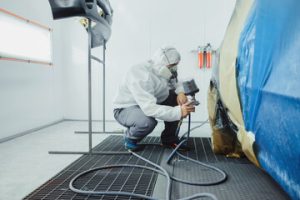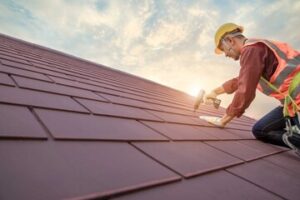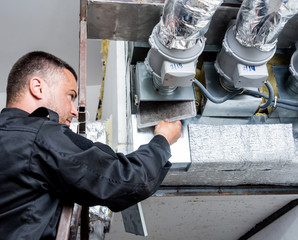When mice are present in your home or business, it can be very disturbing. Scratching sounds in the walls and an unpleasant odor are clear signs of an infestation.

Mice chew on electrical wiring, causing dangerous fires. They can also damage personal belongings. It is important to sanitize the areas where mice have been, especially if children or pets live in the house. Contact Mice Removal Service Texas for professional help.
Rodents like mice and rats are among the most common pests that invade homes and businesses. Left unchecked, they can cause significant damage and lead to contaminated surfaces. In addition, they are prolific chewers and can easily destroy wiring. They can also carry diseases and parasites that put the health of occupants at risk. Fortunately, there are many preventive measures that homeowners and business owners can take to reduce the likelihood of rodent infestations.
Mice and rats typically enter buildings through small openings, such as holes around pipes, electrical wires, and cracks in foundations and walls. They are especially active during the fall and winter months, when they seek warmth inside structures to avoid harsh weather.
Rodents are nocturnal, meaning that they spend most of the day and night looking for food and shelter. Therefore, it is difficult for people to spot signs of them until the problem becomes severe. When it is, it is important to act quickly to mitigate the issue. Signs of a mouse infestation include droppings, unexplained marks on furniture and food containers that could indicate gnawing, and nests in nooks and crannies. Another indicator is hearing scratching noises in the ceiling or walls, particularly after dark.
It’s also important to note that mice and rats reproduce rapidly. A single mouse can have up to 24 offspring within a few weeks. As a result, the number of rodents will quickly grow out of control. The best way to avoid rodent infestation is to take preventive measures, including removing leaf piles and reducing clutter, as well as regularly inspecting your property for potential entry points and sealing them.
To help prevent mouse and rat infestations, you should consider hiring an experienced mouse exterminator near Belmont, MA. A professional will conduct a thorough inspection to identify the source of your problem, and then develop a plan to eliminate it. They will also perform pest exclusion, which involves sealing off tiny entry points that rodents can use to enter your home or business. In addition, they will provide ongoing services to ensure that your rodent problem won’t recur.
Trapping
A rodent infestation isn’t just annoying; it can be a health hazard. Mice, in particular, are notorious carriers of a variety of pathogens and diseases such as hantavirus, salmonella, and lymphocytic choriomeningitis (LCMV). In addition to this, they can also create substantial damage to living spaces by chewing through wires and other structures.
While it is common for mice to slip into residential and commercial spaces in search of food and shelter, the situation can quickly escalate into a full-scale infestation that requires professional intervention. In such cases, a premium pest control service is required to remove these unwanted pests, while also performing preventive measures to ensure that they do not return.
When it comes to rodent removal services, there are a few different options available depending on the type of rodent and its location. Mouse traps, for example, are a highly effective means of controlling mice populations. These are typically thin plastic containers with bait inside that entices mice to enter and become trapped within. These traps are generally positioned in places that mice frequent, such as behind appliances and near electrical wires.
Another highly effective way of removing rodents is through rodent exclusion. This is the process of sealing off entry points that allow rodents to gain access to homes and businesses. Rodents, including mice and rats, are very skilled at entering buildings through small openings, which is why it is important to take steps to prevent them from getting into these areas in the first place.
Finally, there is the option of using natural repellents to deter mice from entering living areas. These are typically scents that mice find unpleasant, such as peppermint oil, cloves, and cayenne pepper. They can be used as a spray or in sachets that are placed around potential entry points.
While there are many ways to manage rodent infestations, it is essential that the problem is dealt with promptly in order to protect the health and safety of residents and employees. Whether it is through trapping, rodent exclusion, or decontaminating, an experienced pest control company can provide the services needed to rid of these pesky critters.
Removal
Infestations of mice and rats that are left unchecked can lead to structural damage, contaminated surfaces, and health risks for household or business occupants. As a result, it’s important to contact a reputable mouse exterminator near Belmont to take care of the problem as quickly as possible. Look for a company that offers quality assurance and utilizes integrated pest management techniques.
Rodents are dirty, scurrying freeloaders that carry germs and diseases wherever they go. They can contaminate food and water supplies, chew through wires to cause fires, and spread more than 35 diseases that humans can catch. These include hantavirus and leptospirosis. A professional mouse exterminator can identify and repair the causes of the rodent infestation and help prevent a recurrence.
Indoor rodents are a common problem in New York homes. These pests are especially troublesome in the fall and winter when they seek warmth inside buildings. They can gnaw through electrical wires and other materials, and they often leave droppings throughout the home. In addition, their habit of chewing can create holes in the walls and floors. A professional mouse exterminator can safely remove the rodents and then rodent-proof the house to prevent future problems.
Outdoor rodents are also a concern. These burrowing animals can destroy gardens and landscaping by digging tunnels that eat the roots of plants. They can also cause lawns to deteriorate by eating the grass from the ground up. They may even dig into the foundation of the house, causing serious structural damage. A professional wildlife removal service can trap the animals, clean up the mess they have made, and provide rodent-proofing solutions for the yard.
Infestations of mice and rat can be hard to spot, but there are some warning signs to watch for. Check for rodent droppings throughout the property, especially around food and water sources. You might also notice scuffling sounds or a musky, ammonia-like smell in the air.
Prevention
The presence of rodents in a home or commercial property isn’t just displeasing—it poses a serious health risk. Rodents carry diseases, contaminate food, and cause damage to structures by chewing through wires and other materials. And while a rodent problem might seem like a minor nuisance, it can quickly become out of hand as the colony expands.
The best approach to prevent mouse infestation is to regularly inspect residential or commercial property for signs of rodent activity. Look for droppings, gnawed materials, and greasy or dirty marks on walls or baseboards. Keep in mind that mice are nocturnal, so you may also hear scratching or running noises in the ceiling or walls.
Several factors attract mice, including food and water sources like unsealed food containers, pet food, and crumbs. They are attracted to cluttered spaces and insulation as well, which provide shelter and nesting sites. The climate in New Jersey also lures mice, driving them to seek warmth and shelter inside buildings. This is particularly true during the fall, winter, and early spring, when they are more likely to seek refuge indoors than at other times of year.
In homes, the most common type of mouse that causes infestations is the house mouse. These rodents are more likely to seek shelter in homes than rats, and they have the ability to slip through small openings. In addition, they dribble urine and feces around the home, which can contaminate food and living space. They can also gnaw through electrical wiring, which can pose serious fire risks. Fortunately, our mouse extermination services are designed to effectively address these issues and prevent future infestations.
Commercial properties can suffer the same fate, with mice seeking shelter and food in warehouses, storage spaces, and breakrooms. Keeping food tightly sealed and addressing trash concerns can help to deter rodents, but regular inspections and targeted treatment are still necessary. This is because mice are able to slip through the smallest of gaps and cracks, making it hard to spot them until an infestation has already occurred. Our mice control service includes sanitation, exclusion, and population reduction to eradicate current rodents and prevent future ones from invading.



